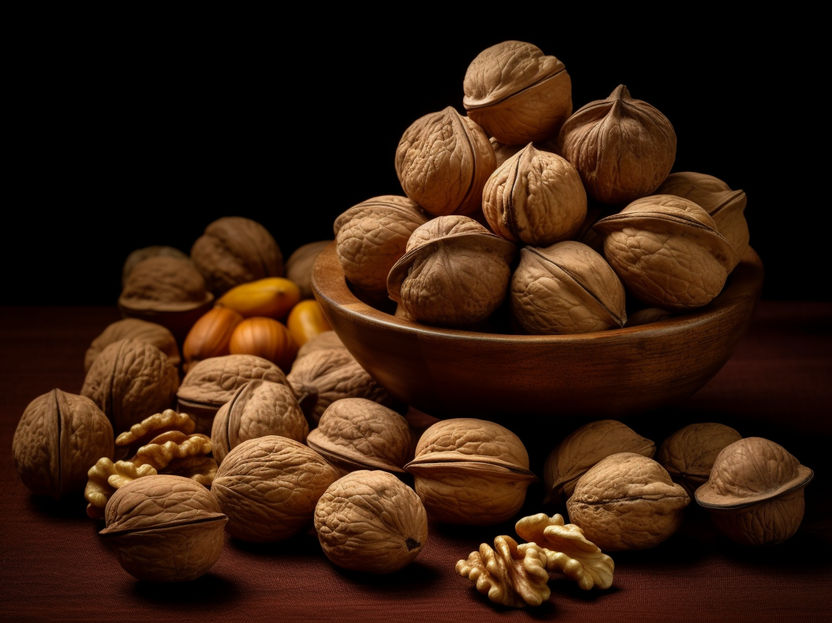It's the Combination that Matters: Oatmeal- Plus Maggi Seasoning-Odor Results in Walnut Aroma
The one-to-one ratio is important
A research team from the Leibniz Institute for Food Systems Biology at the Technical University of Munich has analyzed the aroma of walnut kernels and deciphered the underlying "odorant code". As the team shows for the first time, the typical walnut aroma is created by the combination of two odorants that are present in the nuts in roughly a one-to-one ratio. The first substance is sotolon, which smells like Maggi Seasoning sauce and which, as a single component, characterizes the aroma of lovage, for example. The second compound is called (2E,4E,6Z)-nona-2,4,6-trienal. It is known from oat flakes and is responsible for the typical odor there.

Computer generated picture
British scientists had already olfactorily characterized numerous volatiles from walnuts about 50 years ago. However, none of the compounds they found had a specific walnut note. Thus, the researchers concluded that the characteristic walnut aroma is based on a combination of odorants. Despite this finding and further experiments, however, it had still not been clarified which odor-active compounds are decisive for the aroma of walnuts.
50 odor-active compounds identified
To pursue this question, the team from the Leibniz Institute in Freising, led by Martin Steinhaus, analyzed fresh, dried walnut kernels. In total, the team identified 50 eligible odor-active compounds. However, subsequent quantitative analyses revealed that only 17 of the substances found were present in the nuts in odor-relevant concentrations, i.e., concentrations that could be perceived by the nose.
Based on these results, the team conducted additional aroma reconstitution and omission experiments as well as sensory tests in which they evaluated different combinations of the odor-relevant compounds. In doing so, the researchers demonstrated for the first time that the mixture of sotolon and (2E,4E,6Z)-nona-2,4,6-trienal best reproduces the characteristic walnut aroma.
The one-to-one ratio is important
As the quantitative analyses demonstrated, the two aroma-determining odorants were each present in the nut kernels at a concentration of about 10 micrograms per kilogram. "In our sensory tests, the walnut note intensified even further when we increased the natural concentrations of both odorants up to tenfold," reports Christine Stübner, a doctoral student who worked on the study. "However, it was important to maintain the one-to-one ratio," she continues.
"We have thus deciphered the odorant code of walnut aroma almost half a century after research began. Based on our findings, new breeding strategies can now be developed to improve walnut aroma. But probably the most exciting result is that the combination of two compounds that individually characterize the odor of different foods, creates a completely new food odor," says Martin Steinhaus, who has been section and working group leader at the Leibniz Institute for several years.
As the food chemist explains, the effect is easy to try out. To do this, put a tablespoon of oatmeal in a glass, add a few drops of the well-known seasoning sauce, shake it a bit and smell the mixture.
Original publication
Most read news
Other news from the department science

Get the food & beverage industry in your inbox
By submitting this form you agree that LUMITOS AG will send you the newsletter(s) selected above by email. Your data will not be passed on to third parties. Your data will be stored and processed in accordance with our data protection regulations. LUMITOS may contact you by email for the purpose of advertising or market and opinion surveys. You can revoke your consent at any time without giving reasons to LUMITOS AG, Ernst-Augustin-Str. 2, 12489 Berlin, Germany or by e-mail at revoke@lumitos.com with effect for the future. In addition, each email contains a link to unsubscribe from the corresponding newsletter.




























































